Dear creative friends,
Welcome to Issue No. 50 of the Studioworks Journal! This month, I wanted to dive into another art period in history and extract as much inspiration and goodness as we can! I truly believe art history and the masters therein are here to support us in our creative growth. So let’s take a look at the Rococo movement! This time in art was all about femininity, beauty, frivolity and pleasure and I must admit it does align with the whole Valentines’s Day vibe of February…
Let’s learn about this art movement and find ways to truly indulge in our creativity!
I do hope you enjoy!
xo,

So you may be wondering, where do I start? To that, I say, wherever feels right to you. Each month we will have a theme, a creative affirmation, a power word, a color palette, sketchbook exercises, art projects, articles, recommended reading, and access to wonderful inspiration and resources. I want you to think of this as a delicious new magazine, you know the ones you occasionally splurge on, with soft, velvety pages, beautiful images, and inspiring content!
Each issue will invite you to explore your creative practice in whichever way works for you. Experience each issue at your own pace. Take what resonates with you and put the rest aside for another time.
Grab a cup of something lovely and dive in.
As humans, we have a pendulous quality about us. Often our behaviors swing from one extreme to another, and our art movements reflect this contradictory aspect of our nature. When it comes to Rococo art, the earthy-sounding translation of the word, which derives from the french rocaille, meaning shellwork or pebble work, belies the ornate opulence of the style.
Originating in early 18th century France, Rococo is understandable in part as a response to its immediate predecessor, Baroque. Where Baroque art was masculine, serious, grandiose, pompous, and weighty, Rococo art was feminine, light, romantic, alluring, and playful.
Though both styles employed a surplus of ornamentation and a touch of oddness, Rococo art is distinguished by its pastel tones, delicate curves and counter curves (Cs and Ss), its sensuousness, and elegant exuberance. It is a passionate union of the decorative and fine arts celebrating luxury, refinement, and a lust for life. Its influence swept across continental Europe, leaving an enduring mark on art, architecture, and interior design in its wake.
Rococo art primarily distinguished itself based on the following four techniques and ideas:
1. Decoration- in a fundamental sense, Rococo means decorative as the term itself derived in direct reference to the fountains and grottoes, elaborately inlaid with shells and pebbles, that populated the High Renaissance.
2. Detail work- hand in hand with decoration was the meticulous attention to detail employed during the Rococo movement. Elaborate motifs, scrollwork, arabesques, gilding and tromp l'oeil ruled the day.
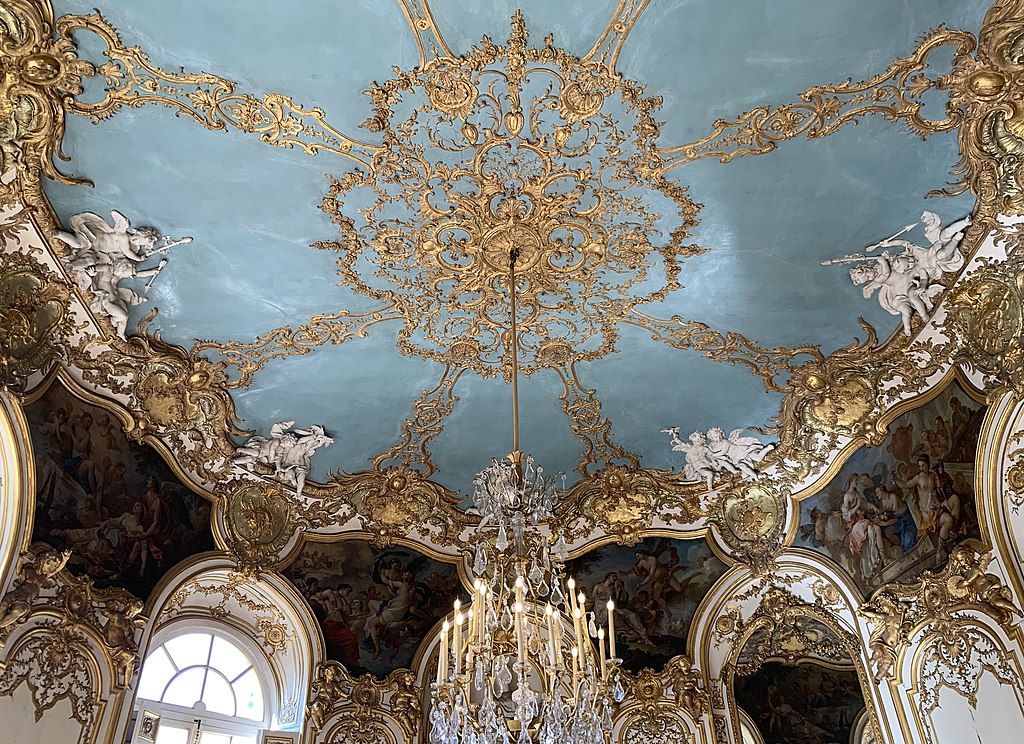
3. Genre paintings- the premiere artist of the Rococo period created a genre later known as fête galante, which depicted luxurious, dreamy, arcadian landscapes often populated by aristocrats engaging in hedonistic revelry. In addition, portraits, where ordinary subjects inhabited mythological or allegorical roles, were a common feature of the era.
4. Theatrical influence- art and architecture merged dramatically, creating echoes of the stage. The combination of painting, decorative objects, mirrors, and dizzyingly ornate design, along with the inclusion of well-known theatrical characters, caused an immersive experience evoking the theater.
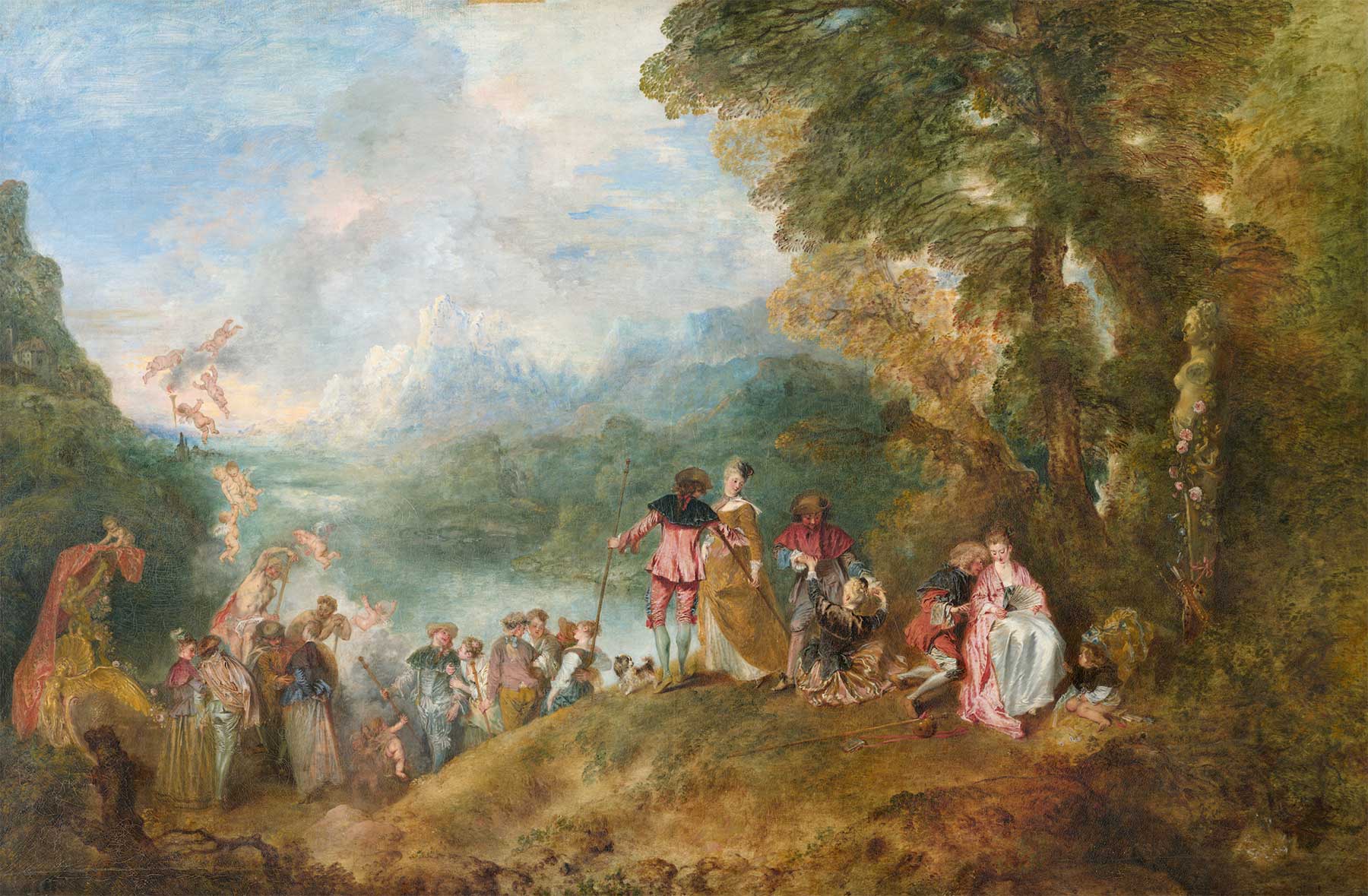
“ Pilgrimage to the Isle of Cythera”
Jean-Antoine Watteau, 1717
Every movement has its primary actors or influencers to use the parlance of our times. In this, Rococo art is no different. The premiere painter of the era, Jean-Antoine Watteau, epitomized the romance of the style creating courtship paintings (trailblazing the genre fête galante as previously mentioned) that came to define the movement.
These paintings were ripe with possibility, but the conclusions were left open-ended. Love feels ever-present but also threatens to dissolve as swiftly as it arrived. There is longing and desire, coupled with the landscape itself as an actor.
Watteau also established the theatrical component of the Rococo movement through the deliberate recurring use of the traditional Italian comedic character Pierrot. By casting this habitually love-blind fool as a more multi-dimensional social outsider and observer, he set the stage for inserting an alter ego in one’s artistic work.
This stylistic choice initiated conversations with other artists that continued through the centuries. Examples range from the dancers and prostitutes of Lautrec and the Harlequins of Picasso to the songs of David Bowie.
Other artists emerged as the Rococo style gained popularity and maturation. One powerful brush wielder of this more established era was François Boucher. Beautifully inspired by both Rubens and Watteau, the first painter to the king, and socially interwoven with the king’s official mistress Madame de Pompadour, his work came to define the period. His influence reached across mediums from tapestry to set design and decorative arts.
Myriad other artists and patrons of the arts played their role in the popularity of the Rococo movement, from the gorgeous landscapes of Giovanni Antonio Canal to the stunning portraits by Rosalba Carriera. Architecture and interior design also saw works of genius, such as Filippo Juvarra’s masterwork, the Stupinigi Palace in Turin, Italy, and François de Cuvilliés Hall of Mirrors in Munich, Germany.
Rococo art was a formidable and lasting force whose complex beauty crossed national boundaries and inspired artists of all stripes. The result is a legacy of achievements that remain as awe-inspiring today as they were two centuries ago.
There are countless lessons to be learned from any significant art movement. These can range from borrowing broad concepts, color palettes, and designs to rejecting, modifying, or mixing and matching themes across eras. Sometimes we learn just as much by what we choose not to replicate or include as by what we wholeheartedly desire to emulate.
In a larger sense, studying a period of art history can provide insight into the widespread commentary artists continuously make about society itself. Rococo artists added to this social conversation in several distinctive ways.
They pushed back on the heavier, perhaps more oppressively hyper-masculine aspects of the Baroque period and chose to implement delicate, alluring, and sometimes gratuitously feminine designs instead.
They exalted in excesses, dramatizations, romanticism, and self-reflection in their work, breaking the rules, implementing new ones, and attempting unproven combinations across media.
They created discourse on what it is to be an artist, including the more challenging aspects of sometimes feeling out of step, excluded, or even being made a mockery.
They portrayed everyday people in grand roles, encouraging the use of imagination and playfulness.
As you embark on a creative project, ask yourself some questions about intention. For example, do you want to embrace the feminine, light, and romantic as Rococo artists did? How do you feel about the pastel palette? Do you favor intricate, ornate design or prefer more sparingly applied detail? Do you have a flare for the dramatic, enjoy poking fun at yourself, or like imagining yourself or your subjects as the primary actors in well-known dramas?
In addition, is there anything you want your piece to say beyond content, color, and design? If so, how overt do you want the message to be? The more consciously you determine the impression you hope to make, the more likely you will succeed purposefully.
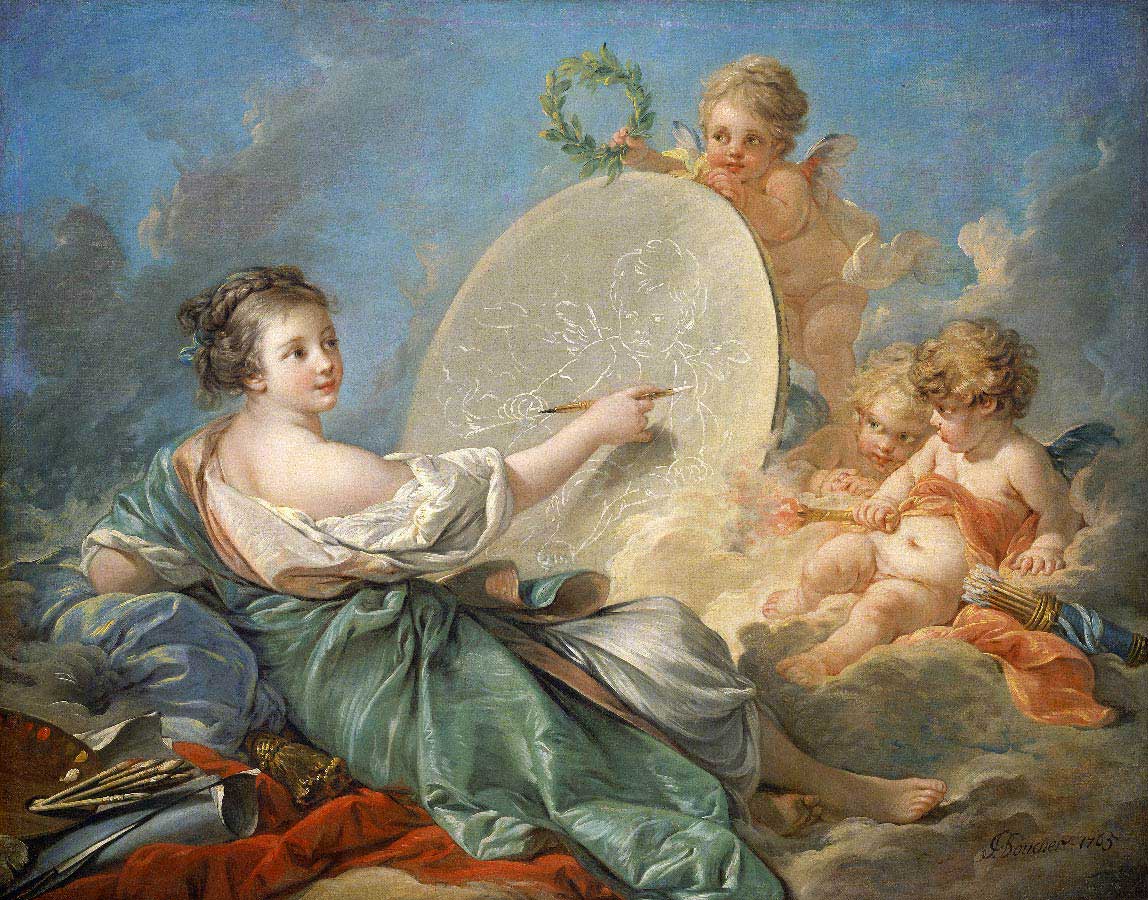
François Boucher, 1765
Essentially, use the examples of Rococo artists to inform your own work. Consider the choices they made, why they made them, and whether or not those decisions are useful to you. Perhaps play around with copying the period’s stylistic preferences and attempt to master them yourself. Afterward, hold onto what you like, and feel free to throw out the rest. So much of the creative process is about exploring the contours of existing molds, learning from past masters, and then joyfully breaking free of them when necessary.
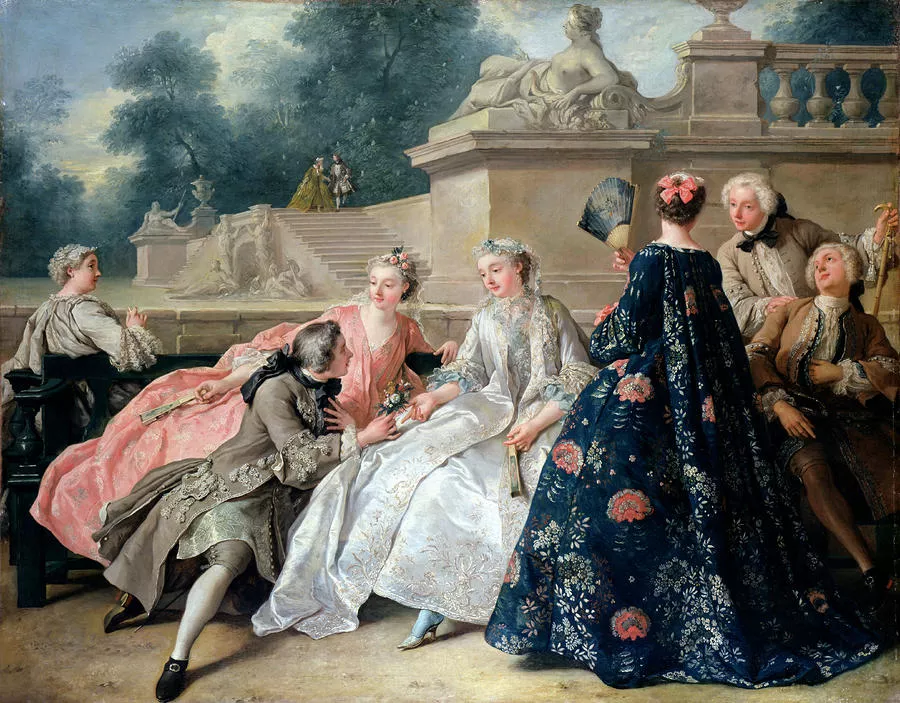
The Declaration of Love
Jean-François de Troy, 1931
Art is always a conversation, as exemplified by the discourse between Rococo artists and their Baroque predecessors. Each period speaks to the previous one, sometimes with praise, sometimes with insult, and sometimes with indifference. The world we inhabit influences us; our personal experiences, tastes, and desires inform our lives as well as our art.
When we hold this knowledge in our minds, we can make deliberate choices about not only the artists we want to be but who we want to be as people. This interplay is where the life mimics art or art mimics life question becomes a chicken or egg type riddle. The answer to both, we know experientially, is that you can’t have one without the other.
So, breathe life into your art by drawing from all available sources. Allow the Rococo movement to imbue your work with some creative romance and free you to embrace some gilded splendor; it's bound to ornament your style in memorable fashion.
Get those journals and sketchbooks out and get ready to do some self-reflection and writing. Try not to judge what comes out of these writing sessions. Don’t worry about punctuation or grammar or any of that. You can even just make lists if that suits you better.
Take a moment to get quiet. Still yourself by doing some gentle breath work. Light a candle. Now ask yourself some questions to reflect upon -
• What does pleasure mean to you?
• What part of your creative process do you find the most pleasure in? Why?
• What part of your creative process do you find the most difficult? Why?
• What colors, textures and subjects bring you the most pleasure? Make a list!
• How can you incorporate more of these elements in your work?
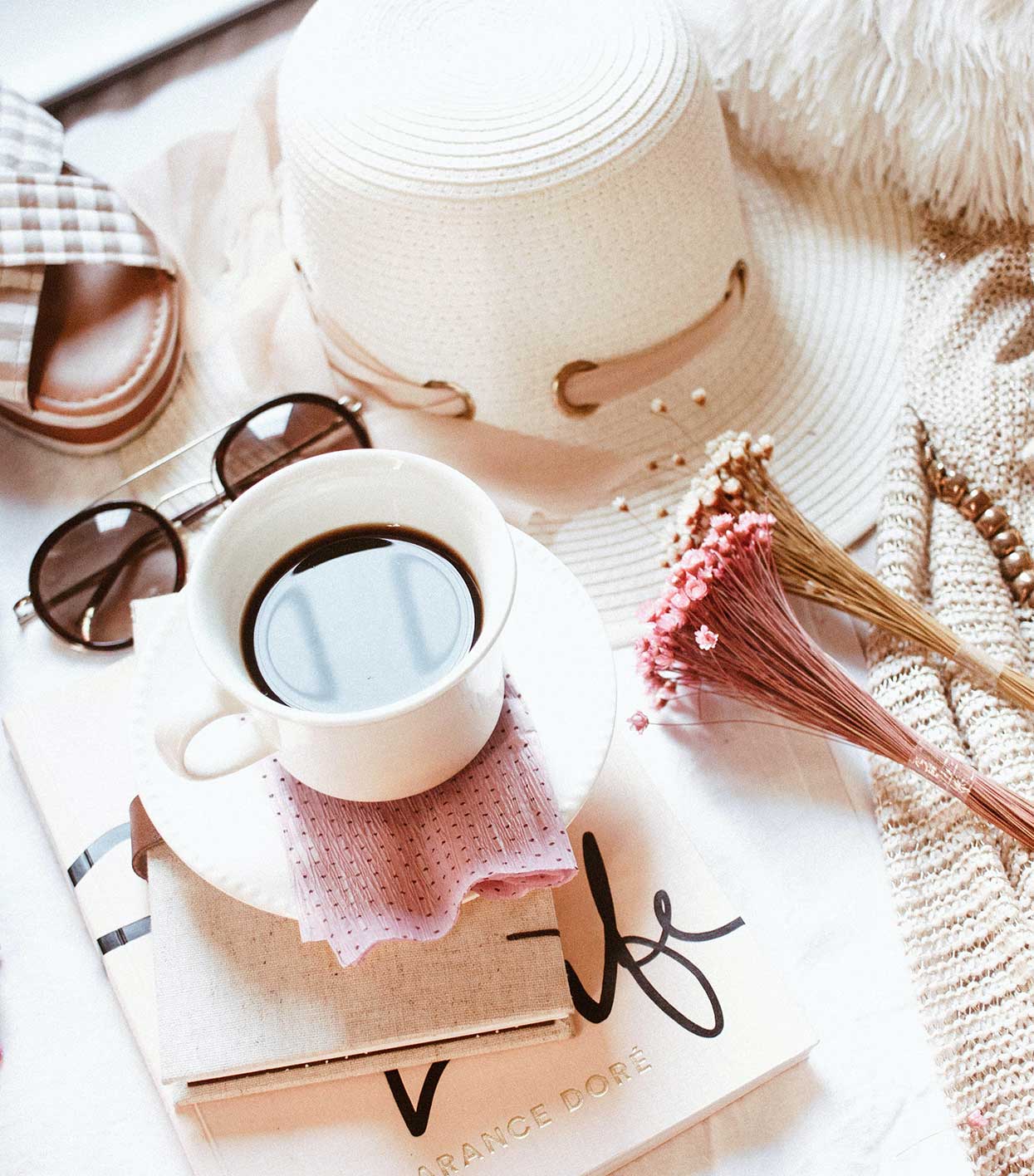
I know I’m probably not the only one that sometimes takes themselves and their creative process a little too seriously…right? I mean, we can really overthink it sometimes. We can get so bogged down with what’s right and what’s wrong and what will people think and am I good enough and so on and so on. But truly at the core of why we paint is because we ultimately find pleasure in doing so! It may be a fleeting moment of joy or a spark of inspiration or a luxurious hour spent in flow but we feel immense pleasure when we connect with our art and our creative energy. So this month, let’s really focus on those moments. Let’s cherish them. Savor them. Hold them close and appreciate that we get to do this work. That we choose to live creatively and therefore can freely delight in beauty and texture and colors and gorgeous papers, brushes and paint. Art is sensual after all right? So pay attention to where pleasure leads you in your creative practice. Let it be your guide…
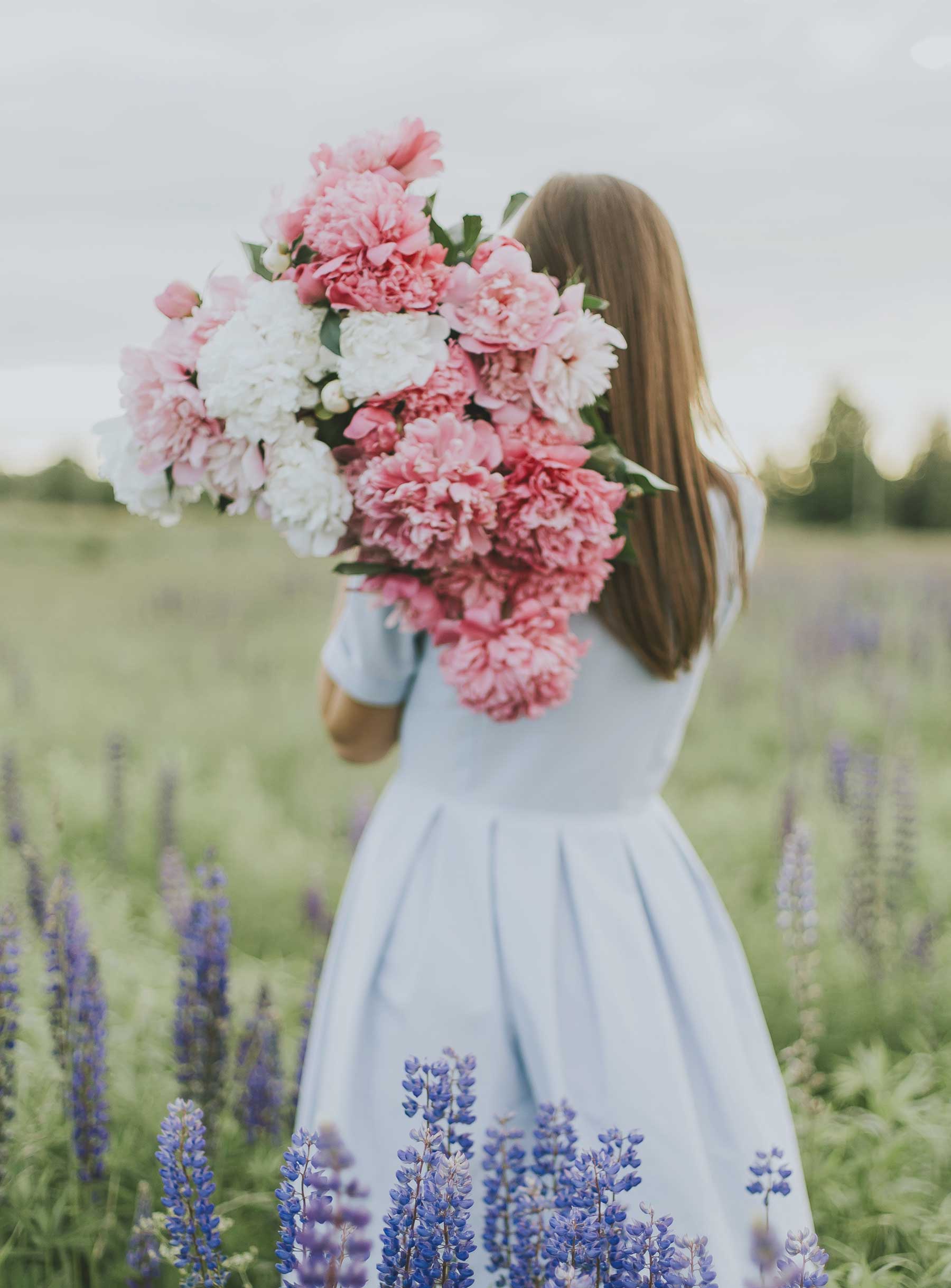
I am sharing this beautiful Meditation from one of my favorite meditation masters - Rachel Hillary. This activating meditation is pure delight for your creative heart. So give yourself the pleasure of 20 or so minutes to experience this one.
Rachel will share a little about this experience -
This meditation took a while to create as a lot of energy has been poured into it. It is crafted to be an activating meditation, with a mixture of soul frequency singing through me, and a sound bath of birdsong and beautiful music, along with gentle guidance to summon the golden heart radiance available through you, during this potent time on earth. Vocals by Rachel Hillary Music by Chris Collins Indie Music Box.
lots of love,
Rachel
Each month we will have a positive affirmation. I recommend you print out this affirmation and put it in your sketchbook or somewhere in your studio. Recite the affirmation out loud each time you show up to create. Saying words aloud is powerful and can begin to re-write some of our own limiting beliefs or calm our fears. Try it now…
After you have created your beautiful altar take some photographs of it. Get up close and try different angles and lighting. Hint - Use the Portrait mode on your iPhone (if you have one) to get lovely bokeh and depth of field effects. Be sure to share your photos with the Studioworks Facebook Group!
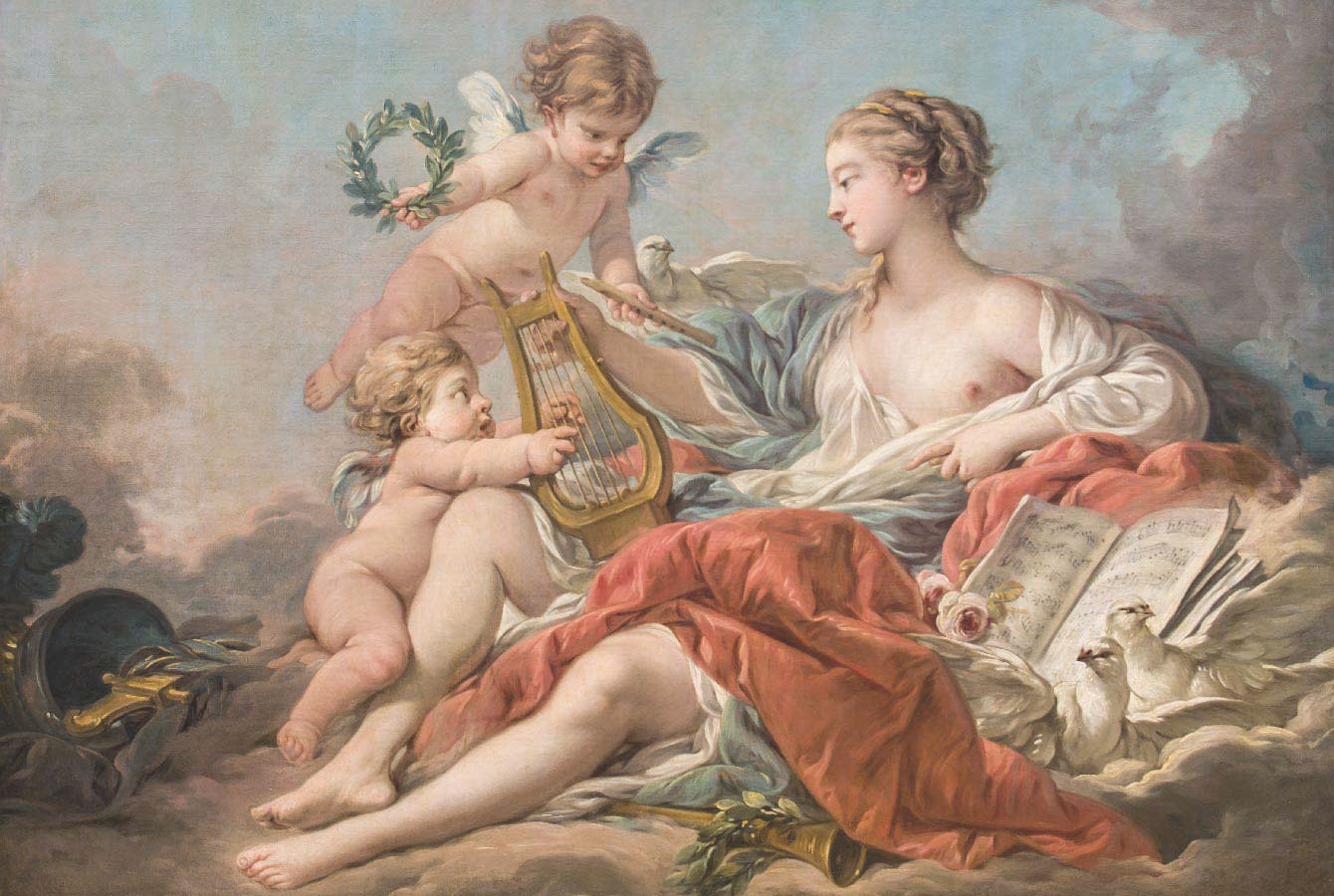
This month, I am inspired by the wonderful pastel tones of the Rococo Movement and from our Masters of this month, Jean Honoré Fragonard & François Boucher This era in art was all about soft color and feminine overtones as previously mentioned. Unsaturated hues combined with generous helpings of light filled whites and ivory and balanced with silver gray. Petal pink, sage green, periwinkle blues, soft golds…this is where we will be meandering during this month. I do hope you enjoy. I’m a big fan of these soft hues.

As always, work with colors that call to you and never doubt your creative intuition. Your colors may look entirely different and that’s ok.
For this issue, I couldn’t pick just one Master. It seems only fitting that we be extra decadent this month and learn about two key players in this art movement! Both these Rococo artists excel at fully embracing the style creating frivolous, frothy pieces full of billowing fabric, overflowing flowers, expressive emotion and romantic gestures. Let’s enjoy the pure delight of learning more about their work and their passionate creative journey.
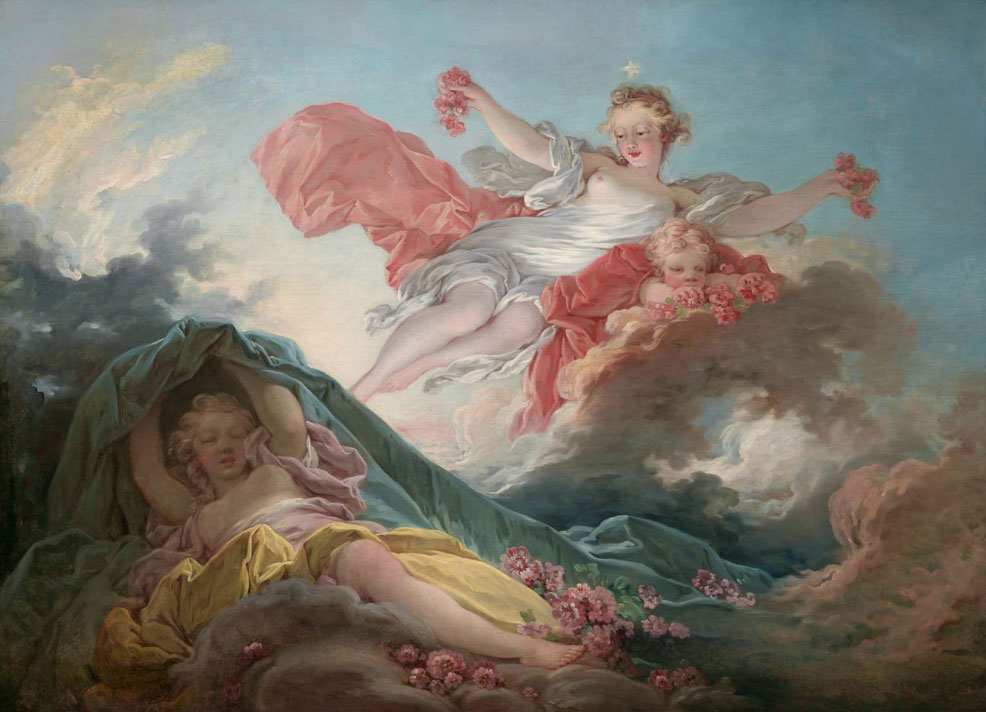
Jean-Honoré Fragonard ( 1732-1806) was born into a family of artisans and merchants in Grasse; his father was a glove maker. The family moved to Paris in 1738, when Fragonard was six, but little else is known about the artist's upbringing. He began to study art as a teenager after a failed apprenticeship to a notary.
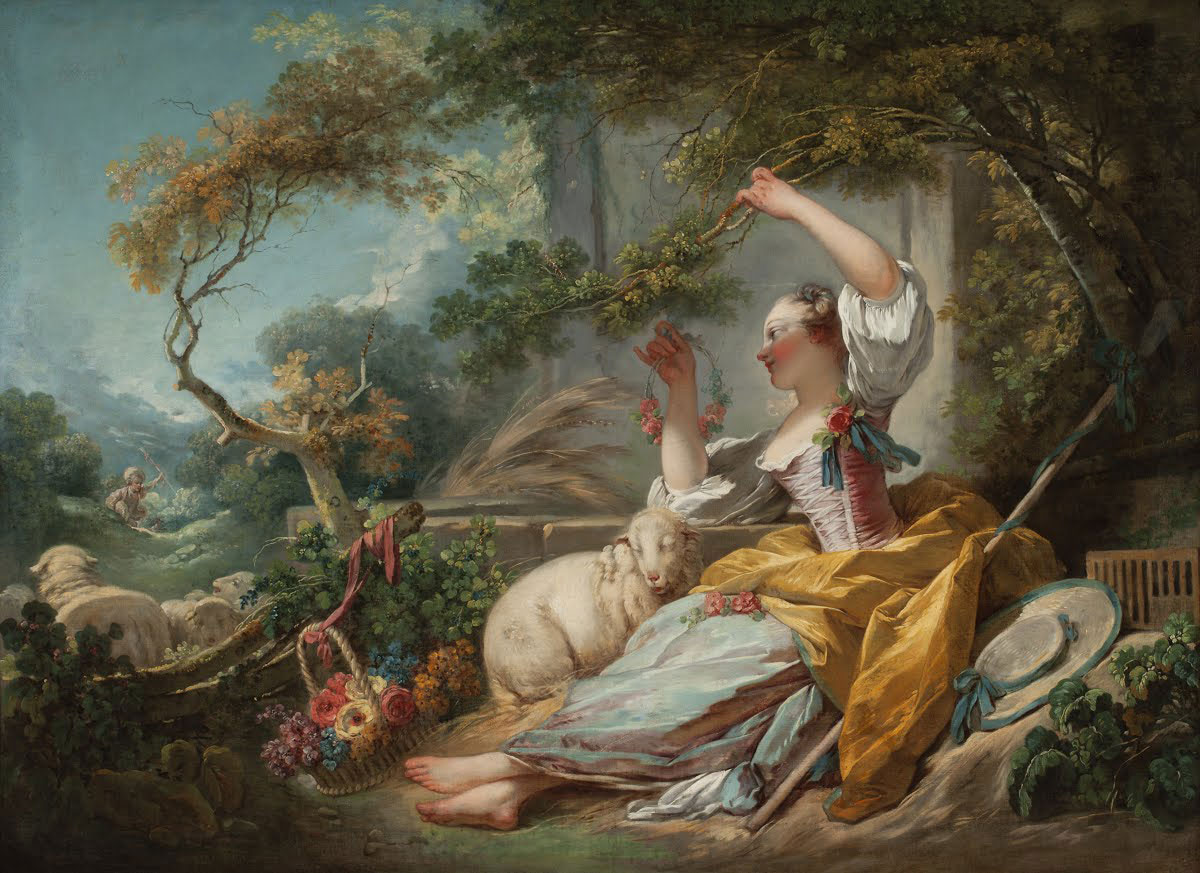
While Fragonard is sometimes romanticized as an outsider, his artistic pedigree and early success shows that this was far from the case. Fragonard studied with two of the great artists of the preceding generation, Jean-Baptiste-Siméon Chardin and François Boucher, both of whom strongly influenced the themes, settings, and symbolism that would characterize his work throughout his career. Fragonard won the Prix de Rome on his first attempt, in August 1752, and became a student at the École Royale des Élèves Protégés, where he worked to become a history painter. He left Paris for Italy in October 1756 and spent five years in Rome studying art with the support of the French Academy. Upon his return, he worked on his admission piece for the Academy, Coresus and Callirhoë, which was purchased by the Crown for embroidery as a tapestry, winning Fragonard a studio in the Louvre and a commission for a second painting to complement it. He quickly obtained, alongside this, a number of private commissions for both murals and smaller scale easel paintings.
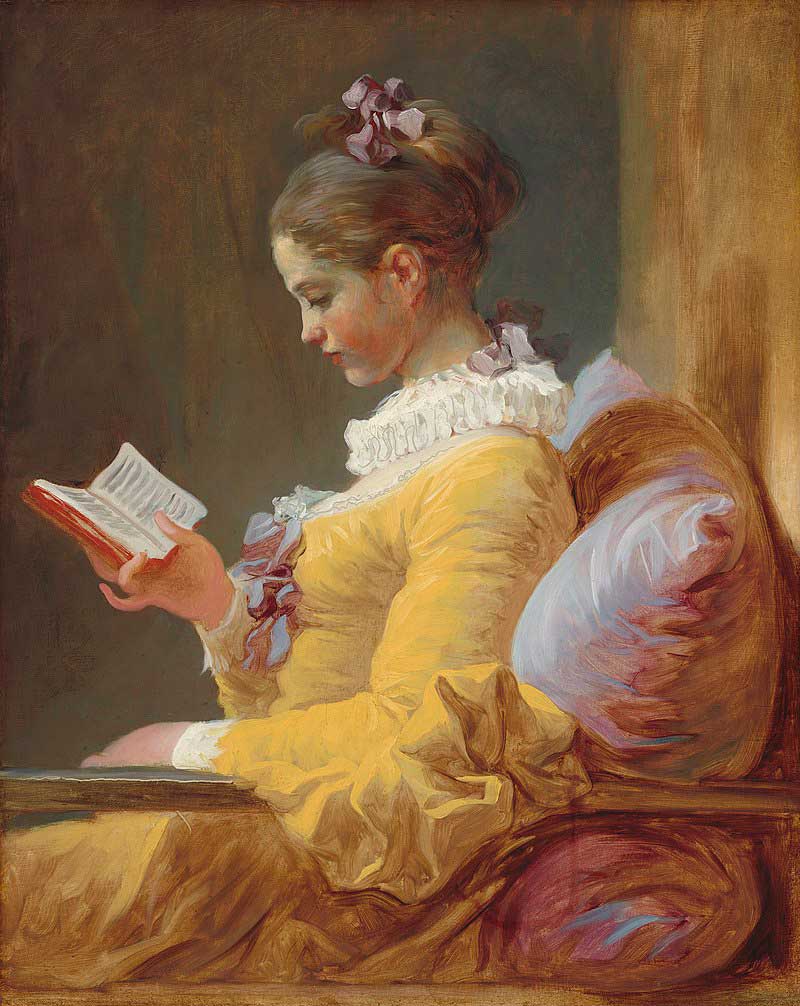
In 1769, Fragonard married Marie-Anne Gérard, fourteen years his junior. Their marriage was subject to some scrutiny, in part because a daughter, Henriette-Rosalie, was born only several months after the ceremony. There would be, over the course of the marriage and after the death of the couple, rumors of infidelity, though concrete evidence for this has not been found. The pair had a son, Alexandre-Evariste Fragonard, in 1780, who would go on to study with Jacques-Louis David and work as a painter. Marie-Anne Fragonard would work as her husband's treasurer for much of her life, painting a number of canvases that were until recently attributed to her husband.
Only a few years after admission to the Academy, Fragonard began to frustrate the artistic establishment, who saw him as a great hope for French history painting, by focusing instead on smaller paintings, drawings and etchings of light-hearted scenes that sold well both to private clients and on the open market. By the end of the decade, Fragonard was being criticized for his professional choices, described as a painter of "ladies boudoirs and dressing rooms;”. Despite this criticism, Fragonard was among the century's wealthiest artists.
Fragonard continued to receive large-scale commissions, but often alienated his clients and supporters by neglecting these commissions or failing to complete them to others' satisfaction. Despite such difficulties working with clients, Fragonard was commissioned in 1775 to create five monumental paintings for the Hôtel de Toulouse in Paris, which he completed in 1780.
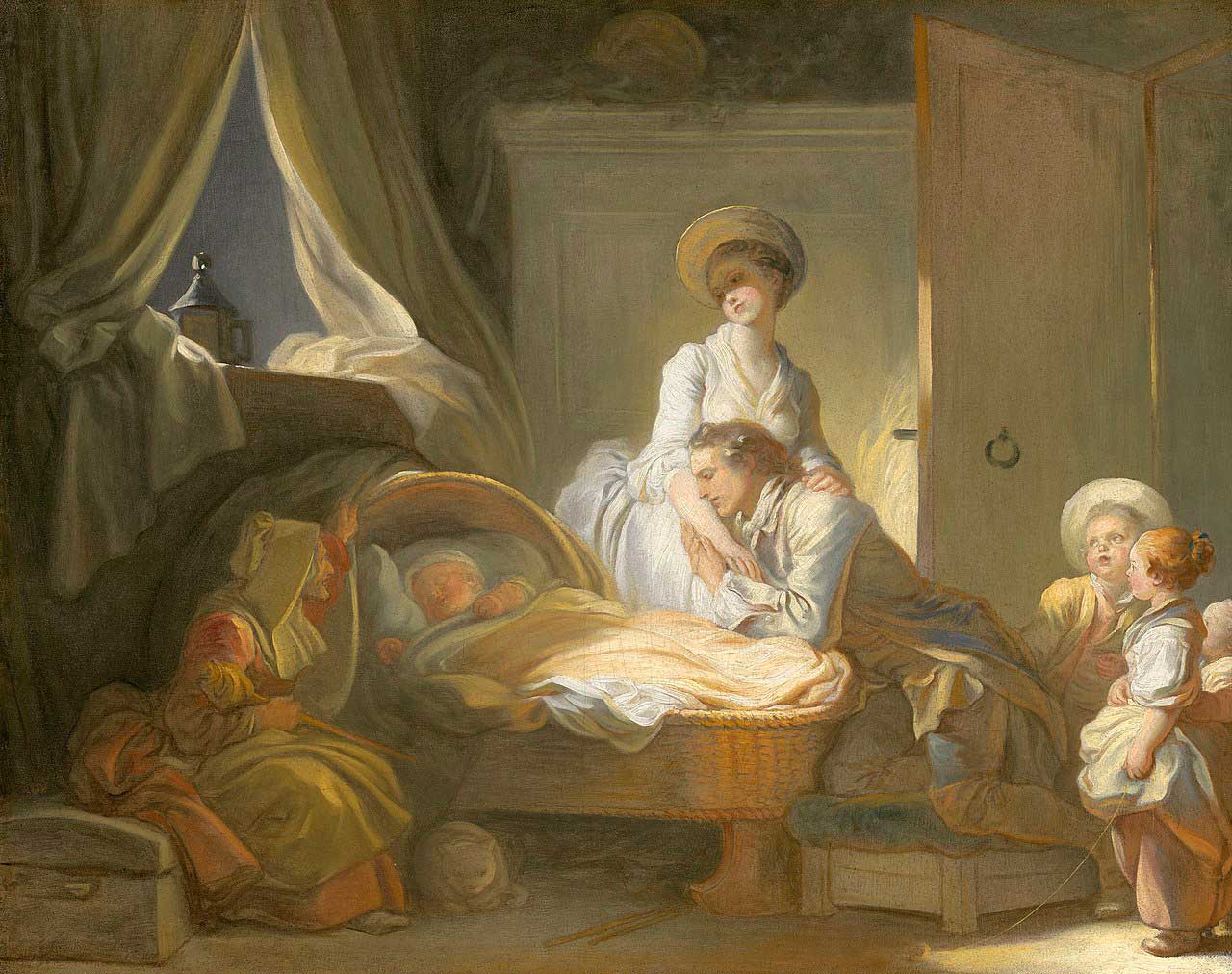
After this, Fragonard worked primarily for the open market, producing cabinet pictures that regularly fetched high prices. This was an unusual mode of production for a successful painter in this period and Fragonard has been described, as a result of this, as the first artist to adopt a modern relationship to the art market. This approach to sales afforded Fragonard greater independence than working to commission, though those purchasing his work continued to be in French aristocratic circles.
Despite his relationship with the Ancien Régime, Fragonard was a supporter of the French Revolution, though it is unclear if this was opportunism or genuine conviction. The market for his work, however, dried up in this period and fell out of fashion; changes in taste were exacerbated, at this moment, by the association of Fragonard's aesthetic with the lavish society that was in the course of being overthrown. The painter was appointed a curator at the Louvre in 1792, with the support of Jacques-Louis David. Fragonard's death, in 1806, was largely overlooked by the French press and public.
Fragonard had only two serious pupils, those being his wife, Marie-Anne Fragonard and her younger sister, Marguerite Gérard. His work had an influence on many contemporary imitators and competitors, though none of these painters achieved the same level of virtuosity as Fragonard himself and their names have generally been forgotten. His application of paint, with its attention to light and reliance on quick, expressive brushstrokes, had a strong influence on the Impressionists, particularly Berthe Morisot and Pierre-Auguste Renoir, and a lineage can be traced from his work through to the Abstract Impressionists in the United States. His best-known work, The Swing, has become iconic and has been widely referenced by contemporary artists. While Fragonard's thematic concerns were long considered outdated, recent interest in gender, the body, and the male and female gaze have given his subjects new relevance; and many artists referencing Fragonard's work do so in order to explore the constructed or performative dimensions of sexuality.
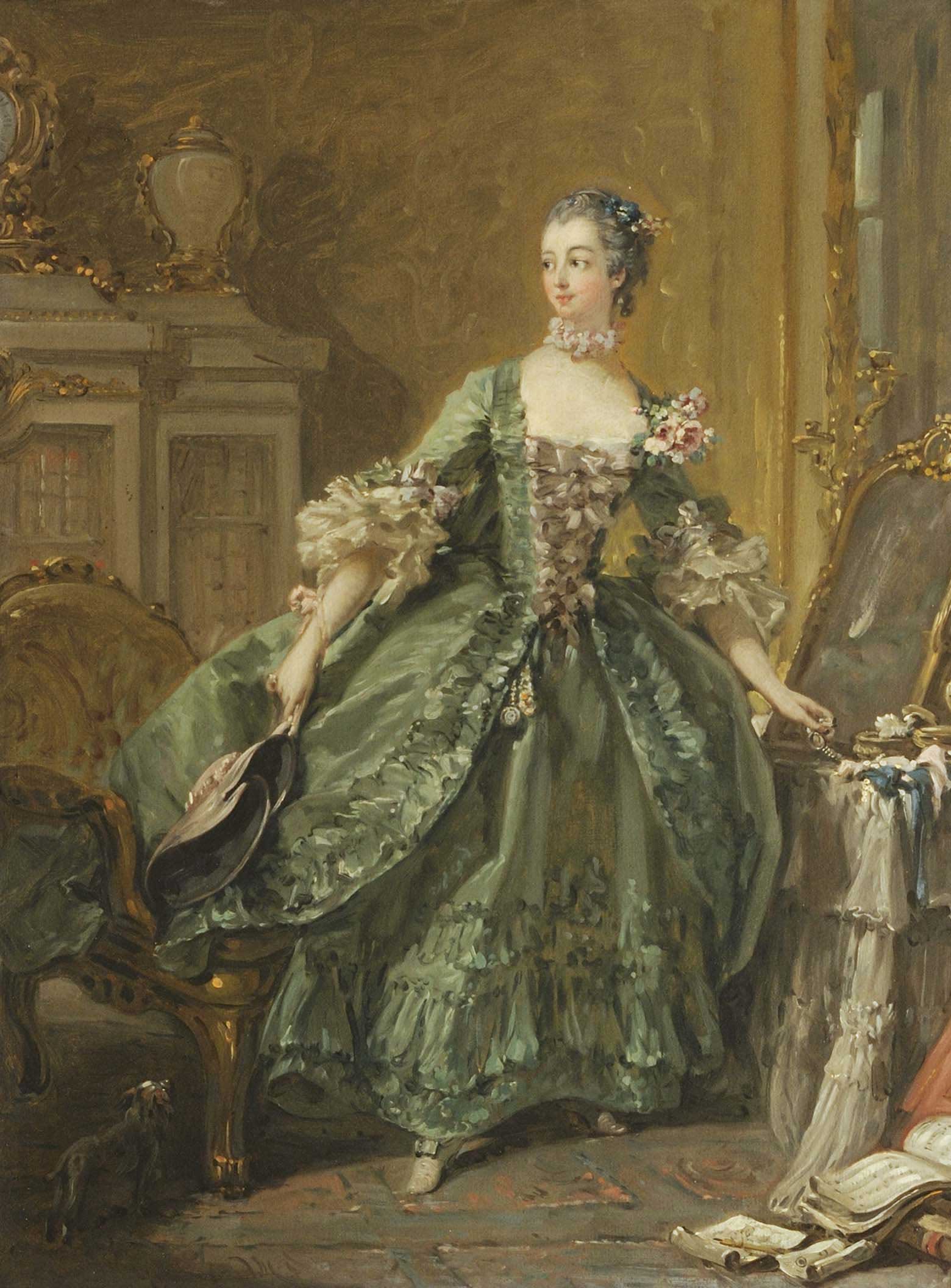
The son of a draftsman, painter and embroiderer, François Boucher (1703 - 1770) was of humble yet artistic origins. His earliest training came with his father in Paris until his work was noticed by the respected painter François Lemoyne. Although the 17-year-old Boucher only remained under Lemoyne's tutelage for a few short months before going to work for the publisher Jean-François Cars, he quickly absorbed the academic style of his first master. Boucher's skill as both a painter and engraver was admired by the highly-respected collector and great patron of the arts, Jean de Jullienne, who entrusted the young artist with the task of engraving the drawings of Antoine Watteau. Despite not having formal training at the Académie, Boucher won the Prix de Rome, the Académie's highest honor, at only age 20.
Though this prize should have funded a scholarship to study in Italy for three years, internal politics within the Académie interfered. Boucher turned to private commissions for paintings, drawings, and etchings, his skills proving prodigious enough that he was able to fund his own trip to Italy in 1728. There, he studied the work of Michelangelo and Raphael, as well as Baroque masters such as Bernini. Upon his return to Paris, Boucher was formally admitted to the Académie; seemingly overnight, he was the sensation of the French art world. His portraits were some of the most sought after among the Parisian élite, his clientele extending all the way to King Louis XV.
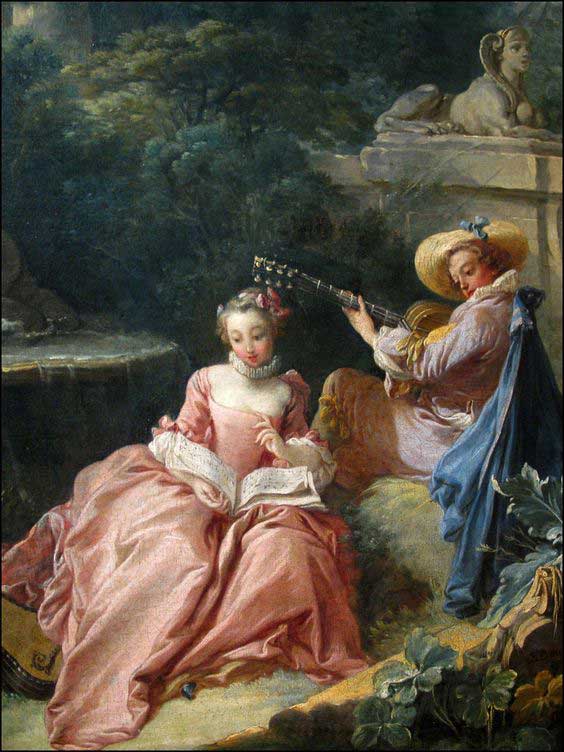
He was in great demand by royal and aristocratic collectors for his mythological scenes, as well as genre paintings, landscapes, and portraits. More affordable prints and engravings after his work were highly collectable among less wealthy admirers, and were widely published and sold. In the late 1730s, Boucher's reputation expanded further yet, when he was invited to create designs for the tapestry factory at Beauvais. Boucher's tapestry cartoons of pastoral scenes were highly treasured, and were exported not only within Europe, but also as far as China. His signature Rococo style was well suited to the decorative arts; soon his designs were reproduced on porcelain. An interest in theatre soon translated into a role overseeing stage set designs for the royal opera.
Despite his many diverse projects, Boucher remained primarily a painter, working for the aristocratic and international elite living in Paris. Madame de Pompadour, the official chief mistress of King Louis XV became his most important patron, commissioning a series of large-scale portraits as well as a number of grand mythological works, such as The Toilet of Venus (1751) and religious paintings like The Light of the World (1750), a nativity scene of maternal love and warmth. With the support of Madame de Pompadour, Boucher was appointed the official painter to the king - in 1765.
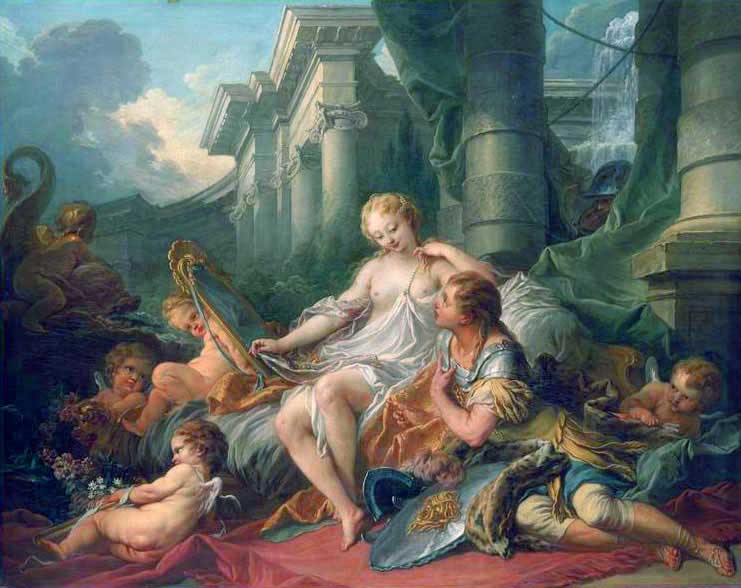
In the same year that he ascended to the king's official painter, Boucher also succeeded the artist Carle Vanloo as the Director of the Académie Royale, solidifying his dominance over French art and its institutions. Though he had reached the highest rungs of official success, however, his reputation and influence began to fade in the face of growing Enlightenment morality and philosophy. In juxtaposition with the early iterations of what would become Neoclassicism, an intellectually rigorous and moralizing style of painting, the aristocratic subjects and pastel palettes of Rococo artists like Boucher were seen as indulgent and frivolous. Despite this shift in public opinion, however, Boucher never wavered from his personal style.
By the late 1760s, Boucher continued to work, although he suffered from poor health, including trouble with his eyesight. He died suddenly in his studio at the Palais du Louvre in 1770, having completed over 10,000 drawings and 1,000 paintings in his lifetime.
By the time of Boucher's death, the Rococo style had fallen out of favor among critics and artists alike. Boucher's name would quickly become synonymous with the outmoded and immoral lifestyle associated with the Ancien Régime. It would not be until well after the French Revolution that Boucher's formal skills would be appreciated during a Rococo revival during the 1860s and 1870s. The impressionist master Auguste Renoir, whose buxom nudes and penchant for pastels bear the obvious influence of Boucher, called his predecessor "the man who best understood the female body." Though still associated with the foppishness and over-indulgence of the aristocracy, today's scholarships have repositioned Boucher as one of the most productive and technically skilled artists of the eighteenth century.
In my opinion, there is something decadent about collage. The collection of beautiful images, luxuriating in arranging them just so and combining elements that provide a feast for the eyes. So let’s indulge in this wonderful creative activity and create a Rococo inspired collage. Take your time and have fun with this! Really absorb the colors, textures and style of the Rococo period in this activity!
Check out our Pinterest board for tons of inspiration!
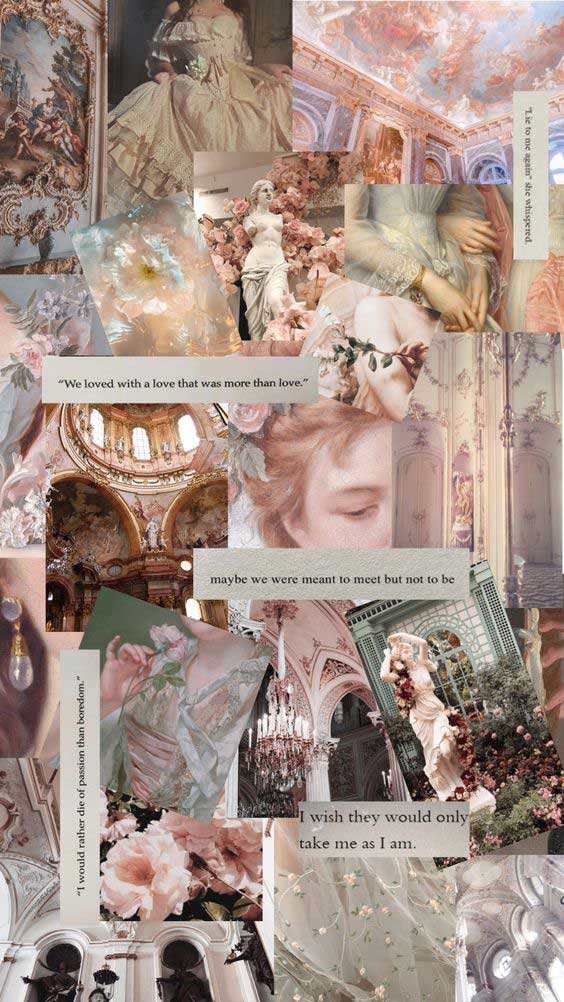
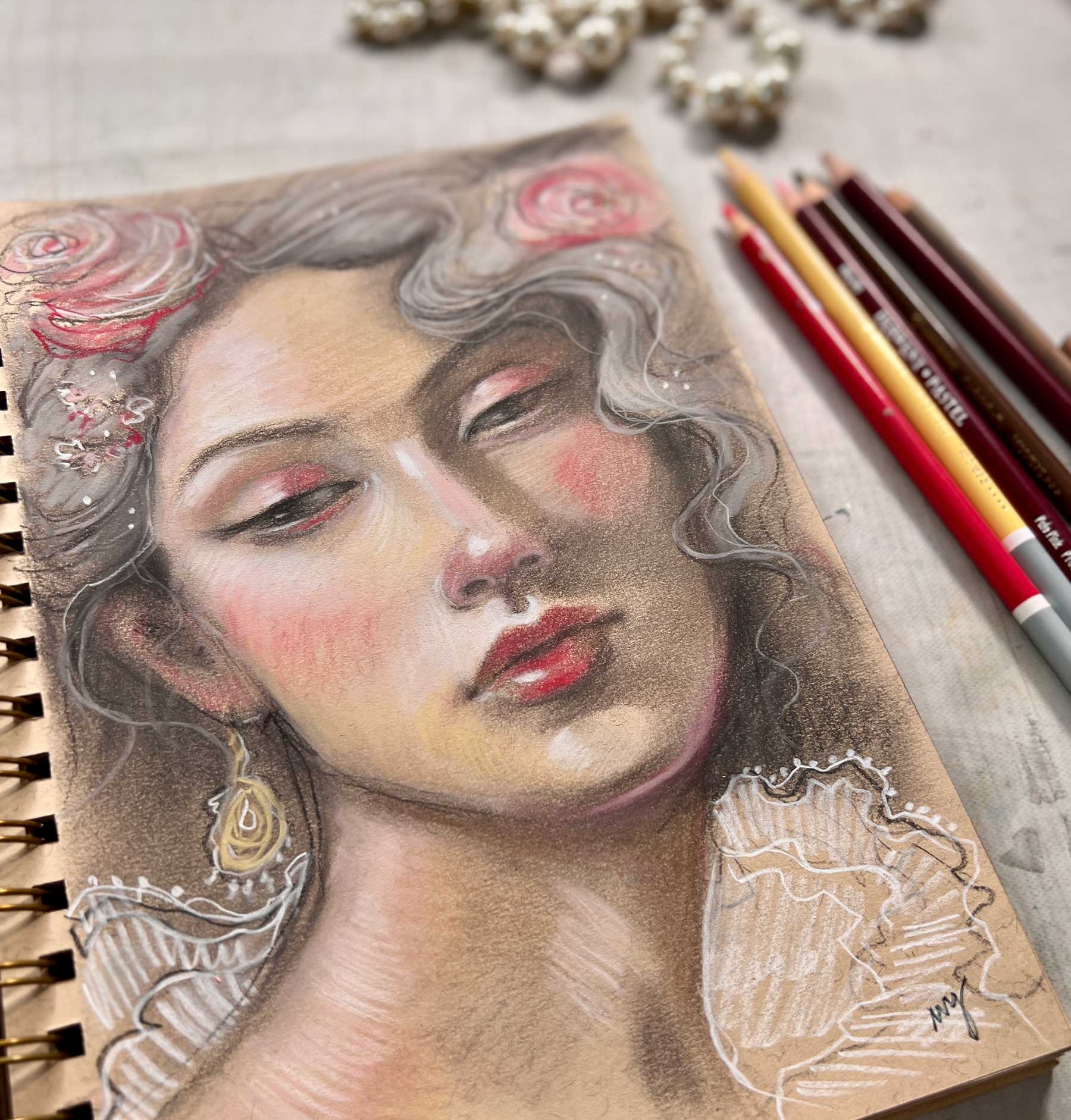
Let’s create a Pastel sketch together! This is our monthly lesson and I do hope you will give it a go. Grab some toned paper and some pretty pastel pencils, pastels or whatever medium you would like and let’s create a loose and playful pastel portrait sketch.
Choose a painting or part of a painting from our Master Artists and do a little master study. Don’t feel you have to replicate it perfectly, rather lean in to the artist’s style and color palette. Imagine what they might have been thinking when they created this piece. Studying a masters work is a great way to explore color and style! I think I’m going to take a look at Fragonard’s painting - “The Love Letter”. Below you will see a link where you can zoom in closely on this painting and really get a feel for the colors and brushwork.
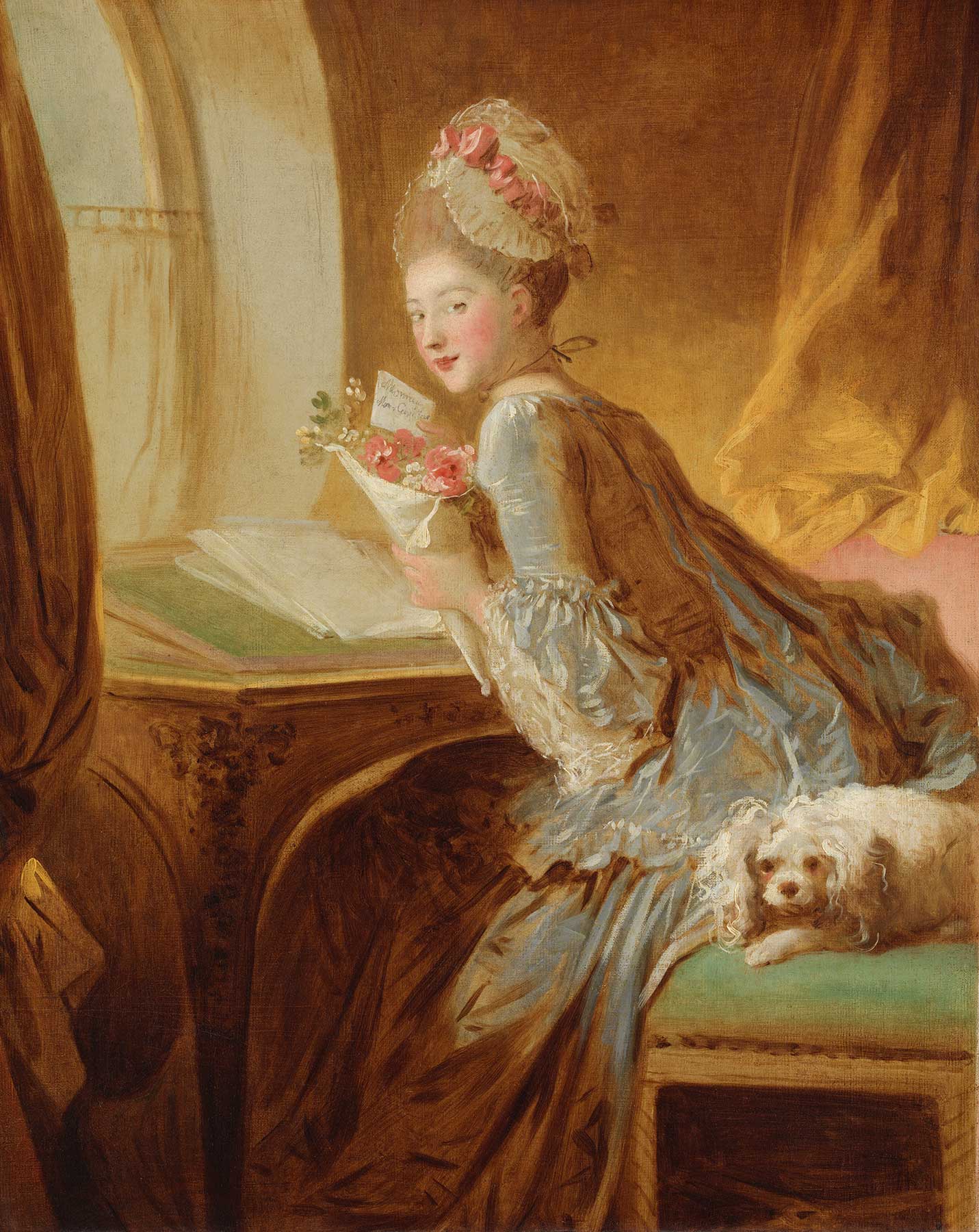
I’m so delighted to bring you this pastel sketch lesson! I wanted to keep our work in our sketchbook or a single piece of toned paper to make this project accessible and fun! Light and joy filled just like Rococo style! So grab a few of your favorite pastel pencils, you could use pastel sticks or colored pencils too and let’s sketch up a beautiful Rococo Muse! Enjoy!!
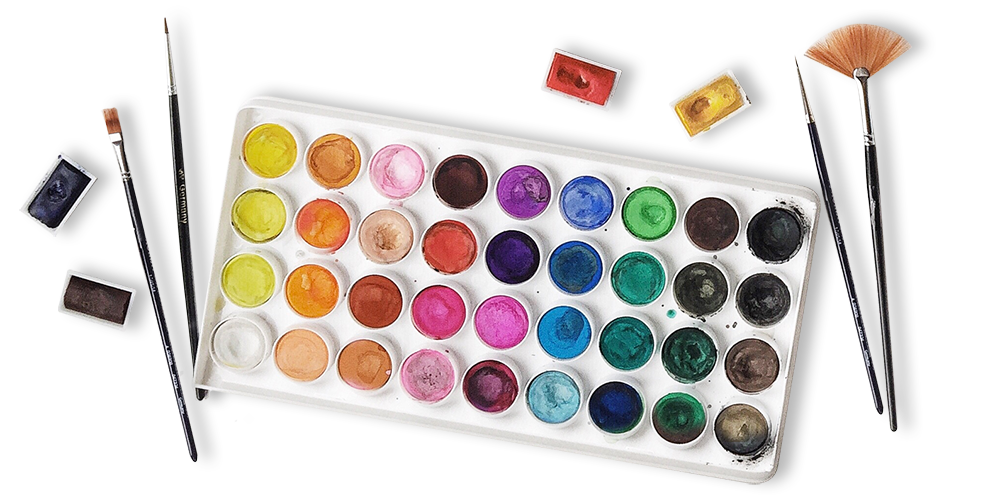
One of my favorite things to do is to curate inspiration. From Pinterest boards to books, resources, playlists and more - I love to share anything that might facilitate learning, expansion, and sparks of curiosity! Being an artist, we naturally crave these things so here are some of this month’s picks from me to you.
I had so much fun curating this list. I hope you enjoy!!
Here are just a few of our fantastic classes! I highly recommend checking them out if you haven’t already. Enjoy!